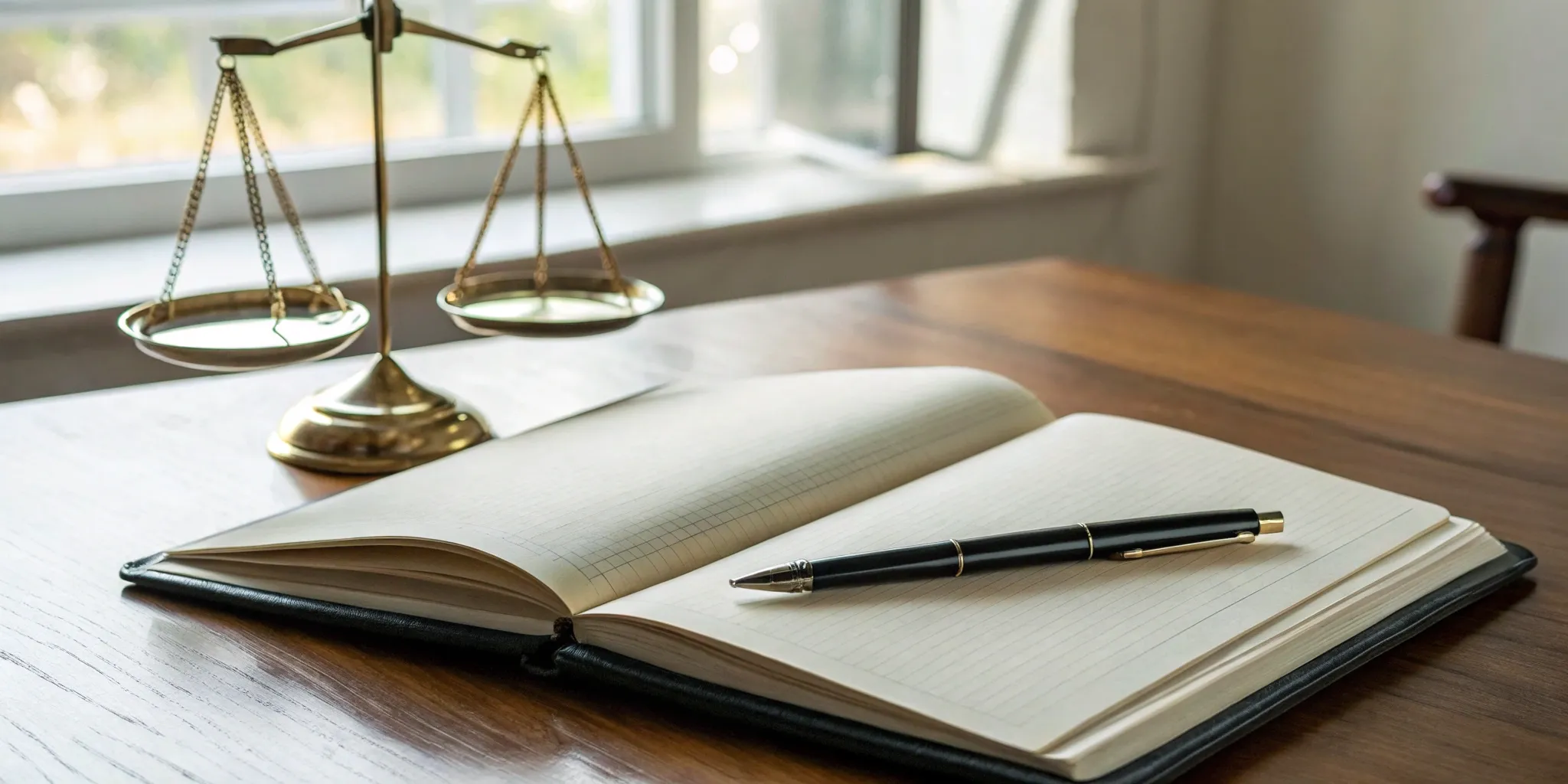Behind many of the biggest legal battles in the country—from dangerous drugs to defective medical devices—is a powerful group of judges you’ve likely never heard of. They are the Judicial Panel on Multidistrict Litigation (JPML), and their job is to bring order to complex, nationwide lawsuits. When similar cases pop up across different federal courts, this panel decides whether to group them together for pretrial proceedings. This process of JPML Consolidation is designed to make the legal system more efficient and fair for everyone involved. Understanding the panel’s role is key to seeing how your case might fit into a larger fight for justice.
Key Takeaways
- MDLs Streamline Complex Cases: The Judicial Panel on Multidistrict Litigation (JPML) groups similar lawsuits to handle pretrial activities, like evidence gathering, in one court. This process saves time, reduces costs, and ensures consistent legal rulings for everyone involved.
- Your Case Remains Individual: An MDL is not a class action. While your case is grouped with others for efficiency during the pretrial phase, it remains your own lawsuit, and any potential settlement is based on your specific injuries and damages.
- Joining an MDL is a Strategic Process: Your case must share “common questions of fact” with others to be eligible for consolidation. An experienced attorney will help determine if an MDL is the best strategy for you and will handle the formal process of petitioning the JPML.
What is the Judicial Panel on Multidistrict Litigation (JPML)?
When many people across the country are harmed by the same defective product, filing individual lawsuits can create a logistical nightmare. This is where a special group of federal judges, known as the Judicial Panel on Multidistrict Litigation (JPML), steps in. They act as organizers for the federal court system, making complex legal processes more manageable for everyone involved. Understanding their role is key to seeing how your case might fit into a larger legal action.
What Does the JPML Do?
The JPML’s main job is to decide whether to combine similar civil lawsuits from different federal courts into a single process called Multidistrict Litigation (MDL). When cases involving a dangerous drug or a faulty medical device pop up nationwide, the Panel reviews them. If the cases share key questions, it transfers them to one court and one judge for all pretrial proceedings. The goal is to streamline everything, prevent conflicting rulings, and save resources for the courts and the people involved. This centralization of cases ensures that the discovery phase—gathering evidence and testimony—happens just once, creating a more efficient path toward justice.
Who Sits on the Panel?
The JPML is composed of seven sitting federal judges appointed by the Chief Justice of the United States. These judges are chosen for their experience in handling complex legal matters. To ensure a balanced, national perspective, a key rule is that no two judges on the Panel can be from the same federal judicial circuit. This structure guarantees that decisions about consolidating cases aren’t influenced by a single region’s legal culture. It brings a diversity of judicial experience to the table, which is crucial when dealing with lawsuits that affect people from all corners of the country.
A Brief History of the JPML
The JPML has been part of the federal judicial system for decades. Congress established the panel in 1968 by passing the Multidistrict Litigation Act. It was created to handle the growing number of complex civil cases, like widespread consumer fraud or personal injury claims, that were overwhelming the courts. Since then, the Panel has reviewed thousands of motions to centralize cases, creating an orderly system for large-scale litigation. This long history shows that the MDL process is a trusted and time-tested method for managing complicated lawsuits and helping plaintiffs efficiently pursue their claims.
What is Multidistrict Litigation (MDL)?
When many people across the country are harmed by the same product, medication, or action, they often file individual lawsuits. If these cases involve similar core issues, they can be grouped together in a process called Multidistrict Litigation, or MDL. Think of it as a way to make the legal system more efficient. Instead of hundreds or even thousands of separate courts trying to figure out the same basic facts, the cases are temporarily sent to one federal judge.
This consolidation is designed to streamline the early phases of the lawsuits, like gathering evidence and expert testimony—a stage known as pretrial proceedings. The goal is to save time, reduce costs for everyone involved, and ensure consistent rulings on shared legal questions. It’s a common procedure for complex cases, especially those involving defective products or widespread consumer issues. While your case is part of the group for these initial steps, it remains your individual lawsuit, and the unique facts of your situation are still front and center.
How an MDL Works
The process begins when the Judicial Panel on Multidistrict Litigation (JPML) decides that multiple lawsuits filed in different federal courts share common questions of fact. The panel then transfers these cases to a single district court and assigns them to one judge. This judge oversees all the pretrial activities, like discovery, where both sides exchange information and evidence. This centralized approach prevents different courts from issuing conflicting rulings on the same evidence and avoids forcing a company to produce the same documents over and over again. Once the pretrial phase is complete, cases that haven’t been settled are typically sent back to their original courts for trial.
Common Types of MDL Cases
MDLs are used for a wide variety of complex cases where many people have been similarly injured. You’ll often see them in situations involving product liability, such as when a medical device fails or a consumer product is found to be dangerous. Mass torts, which are civil actions involving numerous plaintiffs against one or a few defendants, are also frequently handled this way. This can include claims related to toxic torts from environmental exposure. Other common examples include lawsuits over pharmaceutical drugs with harmful side effects, securities fraud, and widespread consumer fraud schemes.
MDL vs. Class Action: What’s the Difference?
It’s easy to confuse an MDL with a class action, but they are fundamentally different. In a class action, a large group of people are joined together into a single lawsuit, represented by a few named plaintiffs. If they win or settle, everyone in the class is typically bound by that one outcome. In an MDL, however, each lawsuit remains individual. Your case is simply grouped with others for efficiency during the pretrial phase. This means that the unique details of your injury and the specific damages you suffered are still considered separately. If your case doesn’t settle during the MDL process, you retain the right to have your individual case tried in court.
How Does the JPML Consolidate Cases?
When many similar lawsuits are filed across the country, the JPML steps in to decide if they should be grouped together. This process, called consolidation, doesn’t merge your case with others. Instead, it streamlines the early stages, like evidence gathering, by handling them all in one court. This makes the process more efficient and consistent for everyone. The panel follows a specific set of procedures to determine if and how cases should be combined.
The Case Transfer Process
The process begins when the JPML identifies related lawsuits in different federal courts. It then decides whether to transfer these cases to a single district court for all pretrial proceedings. This move centralizes the initial fact-finding stage under one judge. The goal is to create a more manageable process, ensuring all related claims are handled consistently before they are either settled or sent back to their original courts for trial.
Criteria for Combining Cases
The JPML weighs three key factors before combining cases. First, the lawsuits must share “common questions of fact,” like when many people are harmed by a single defective product. Second, the transfer must be convenient for the parties and witnesses involved. Finally, consolidation must promote judicial efficiency and fairness, making the legal process smoother for everyone.
The Role of the Transferee Court
After deciding to consolidate, the JPML selects a “transferee court” and a judge to oversee the MDL. This court becomes the central hub for all pretrial activities, from managing the discovery process to hearing motions and guiding settlement talks. Having one judge handle these critical early stages ensures that rulings are consistent across all related lawsuits, which prevents conflicting decisions from different courts.
Managing Pretrial Proceedings
The main purpose of an MDL is to make the pretrial phase more efficient. It avoids repetitive discovery and inconsistent rulings, which conserves resources for everyone. For example, instead of a company producing the same documents hundreds of times for individual cases involving a medical injury, it only has to do it once in an MDL. This streamlined approach saves time, money, and judicial energy.
Is Your Case Eligible for an MDL?
Not every case is a candidate for multidistrict litigation. The Judicial Panel on Multidistrict Litigation (JPML) has a specific set of criteria it uses to decide whether to group individual lawsuits together. The panel’s main goal is to determine if consolidation will make the legal process more efficient and fair for everyone involved.
Understanding these factors can help you see where your own case might fit into the bigger picture. An experienced attorney can evaluate the specifics of your situation, but here are the key questions the JPML considers when making its decision.
Sharing Common Questions of Fact
The most important factor the JPML looks at is whether the individual lawsuits share “common questions of fact.” In simple terms, this means the cases must revolve around the same core issues. For example, if hundreds of people across the country suffered similar health problems after using the same medication, their cases would share common questions about whether the drug was unsafe. This overlap is the foundation of an MDL. Cases involving defective products or exposure to the same harmful substance are often strong candidates for this reason, as they center on a single source of harm.
Considering Case Locations
The JPML also considers where the lawsuits are currently filed. If cases involving the same issue are scattered across many different federal courts, it can create a logistical headache for everyone. The panel evaluates whether transferring these cases to a single court would be more convenient for the parties and their witnesses. Centralizing the cases in one location streamlines the pretrial process, like gathering evidence and hearing from expert witnesses. This move is designed to make a complex situation much more manageable by bringing all the key proceedings under one roof, ensuring a more organized and consistent approach.
Meeting Key Deadlines and Requirements
The process of requesting an MDL is a formal one with its own rules and deadlines. A request to consolidate cases can be initiated by either the plaintiffs (the people filing the lawsuits) or the defendants. In some instances, the JPML can even decide to start the process on its own initiative. Because this involves specific legal motions and arguments, it’s crucial to have a legal team that understands the procedural requirements. Your attorney will handle the necessary filings to petition the panel and present a strong argument for why your case belongs in an MDL, taking that complex burden off your shoulders.
Other Factors the JPML Considers
Beyond the main criteria, the JPML looks at the big picture: will consolidation serve the principles of justice and efficiency? The panel’s purpose is to prevent repetitive work, avoid conflicting rulings from different judges, and conserve the resources of the courts and the people involved. Ultimately, the decision comes down to whether an MDL will create a more organized and fair path forward for a large number of people who have suffered a similar personal injury. This helps ensure that the legal system can handle complex, widespread cases without getting bogged down, allowing your voice to be heard more effectively.
The Pros and Cons of Consolidating Your Case
Deciding whether to join a multidistrict litigation (MDL) is a significant step in your legal journey. Like any strategic decision, consolidation has both powerful advantages and potential drawbacks. The right path depends entirely on the specifics of your situation. Understanding these pros and cons will help you and your attorney make an informed choice about what’s best for you. It’s about weighing the efficiency of a group effort against the unique details of your individual case.
This process is designed to handle complex situations, such as those involving widespread harm from defective products or dangerous medications. Let’s break down what joining an MDL could mean for your case.
Pros: Efficiency and Consistency
The primary goal of an MDL is to make the legal process more efficient and fair for everyone involved. When hundreds or thousands of people have been harmed in a similar way, it doesn’t make sense for each person to start from scratch. Consolidation streamlines the pretrial phase by grouping cases before a single judge. This avoids repetitive work, prevents conflicting rulings from different courts, and ultimately conserves the resources of both the people filing suit and the judicial system.
For you, this means a more organized and consistent process. Having one judge oversee all related cases ensures that legal interpretations are uniform, which can lead to more predictable outcomes. It allows your legal team to pool resources with other attorneys, strengthening the case for everyone.
Cons: Potential Complexities
While MDLs are built for efficiency, they can also introduce new layers of complexity. Your individual case becomes one part of a very large whole, which can sometimes feel like you’ve lost a degree of personal control. The process is managed by a lead counsel committee, and major decisions are made for the group.
Additionally, the creation of an MDL can sometimes trigger more aggressive legal maneuvering from the defense. The JPML has specific criteria for consolidation, including whether cases share common questions of fact and whether combining them serves the convenience of the parties and the courts. Meeting these standards isn’t always straightforward, and the initial process of getting cases consolidated can be a legal battle in itself.
Key Strategic Considerations
The decision to pursue consolidation is a strategic one. Either the plaintiff’s side or the defendant’s side can petition the JPML to centralize a group of cases. In some instances, the Panel may even decide to do so on its own initiative. If both sides agree that an MDL is the best path forward, their lawyers may even agree on which court should handle the consolidated cases.
When the parties disagree, the Panel steps in to decide. Research shows that the JPML sides with plaintiffs and defendants about equally, so it’s not a process that inherently favors one side. This is a critical conversation to have with your legal team. An experienced personal injury attorney can help you weigh these factors and determine the most effective strategy for your claim.
Your Rights and Responsibilities in an MDL
When your case becomes part of a Multidistrict Litigation (MDL), it can feel like you’re joining a much larger fight. And in many ways, you are. But it’s important to remember that you still have your own unique case, rights, and a vital role to play. Understanding what’s expected of you—and what you can expect from others—is key to feeling confident as you move forward. The MDL process is designed to make things more efficient, not to silence your individual story. It consolidates pretrial activities like discovery, but your claim remains your own. Let’s walk through what this looks like for everyone involved.
What to Expect as a Plaintiff
As a plaintiff, the main thing to know is that the MDL is designed to make the legal process smoother and more consistent. Instead of hundreds or thousands of similar lawsuits proceeding separately and repeating the same steps, they are grouped together. The goal is to save time, money, and resources for everyone, including the courts. This means you won’t have to go through repetitive discovery processes, and it helps prevent different judges from making conflicting decisions on the same core issues. While your case is grouped for these pretrial steps, you still retain your individual claim for damages based on your specific experience with a defective product.
The Defendant’s Obligations
The company or entity you are suing also has specific responsibilities within an MDL. For them, facing a consolidated group of lawsuits requires a highly coordinated and careful legal strategy. They can’t treat each case in a vacuum. Instead, they must respond to the shared discovery and legal arguments presented by the plaintiffs’ group. Because the JPML is a unique judicial body, defendants have to be very strategic about how they present their case and which battles they choose to fight during the pretrial phase. Their actions are watched closely by the court and all the plaintiffs involved, making their every move significant for the outcome of the entire litigation.
The Role of Your Attorney
Your attorney is your most important guide and advocate in an MDL. They are responsible for representing your specific interests within the larger group and ensuring your voice is heard. A key part of their role can even happen before the MDL is formed; any party’s attorney can petition the JPML to centralize a group of cases if they believe it’s the best path forward. Throughout the process, your lawyer will work with a committee of other plaintiffs’ attorneys, manage the complex legal procedures, and keep you informed. At Counsel Hound, we connect you with proven attorneys who understand how to handle these complex cases and fight for your rights every step of the way.
The Court’s Authority and Role
The Judicial Panel on Multidistrict Litigation (JPML) holds the authority to decide whether cases should be consolidated into an MDL. The panel doesn’t make this decision lightly. They carefully review several factors to ensure consolidation is the right move. First, they look for common questions of fact across the cases—for example, if everyone was harmed by the same toxic exposure. They also consider if transferring the cases to one court would be convenient for everyone involved and, most importantly, if it will promote a fair, efficient, and economical legal process. The panel’s job is to create a structure that serves justice in the most effective way possible.
Key Steps in an MDL Case
Once your case is part of an MDL, the legal process follows a structured path designed for efficiency. While every case is unique, the major stages generally involve gathering evidence, negotiating settlements, and, if necessary, preparing for trial. Your attorney will guide you through each phase, but understanding the roadmap can help you feel more prepared for what’s ahead. The goal is to resolve common legal questions collectively while ensuring your individual claim receives the attention it deserves. This consolidated approach helps streamline proceedings, saving time and resources for everyone involved.
Coordinating the Discovery Process
Discovery is the formal process of gathering evidence from the opposing party. In an MDL, this phase is coordinated to prevent hundreds or thousands of plaintiffs from making the same requests. Instead of each legal team deposing the same witnesses or requesting the same internal documents, lead attorneys handle a central discovery process. This approach is designed to avoid repetitive work, prevent conflicting court rulings, and conserve the resources of both the courts and the people involved. This means you won’t have to worry about the massive logistical challenges of evidence gathering; it’s handled efficiently on behalf of all plaintiffs in the MDL.
How Settlements Work in an MDL
While an MDL combines cases for pretrial proceedings, settlements are often handled in large groups or blocks. The JPML’s role in consolidating cases can lead to more streamlined settlement negotiations. Attorneys for both sides may negotiate a global settlement framework that addresses the claims of all plaintiffs. However, this doesn’t mean everyone gets the same amount. Settlements are typically allocated based on the specific details and severity of each individual’s injury or damages. Your attorney’s job is to fight for a fair resolution that reflects the harm you specifically suffered from issues like medical injury or toxic exposure.
Tips for a Successful Outcome
A successful outcome starts with a strong case. The JPML considers several factors when deciding to consolidate cases, including whether they share common questions of fact and whether combining them promotes fairness and efficiency. To support your claim, work closely with your legal team to provide a clear, detailed account of your experience. This is especially important in cases involving things like defective products, where consistent evidence of a product’s failure is critical. Being responsive to your attorney and providing thorough information helps build the foundation for a favorable result.
Keeping Your Documentation in Order
From the moment you suspect you have a case, start keeping meticulous records. This includes medical bills, repair receipts, photos, emails, and any other documentation related to your injury or financial loss. Because any party can petition the JPML to centralize cases, it’s essential to have your evidence organized from day one. This preparation ensures your attorney has everything they need to represent you effectively, whether your case joins an MDL or proceeds on its own. If you need help understanding what to keep, you can always contact us for a free consultation to get started.
What’s Next for Multidistrict Litigation?
The world of multidistrict litigation is constantly evolving. As new challenges arise, the legal system adapts to handle complex cases more effectively. For plaintiffs, this means the process is always being refined to better serve justice and efficiency. Understanding these changes can help you see how your own case fits into the bigger picture and what the future might hold for large-scale legal actions involving issues from defective products to consumer fraud. The goal is always to make the path to resolution clearer and more manageable for everyone involved.
Emerging Trends in MDLs
One of the biggest trends we’re seeing is the expanding use of MDLs across different types of cases. Initially common in specific areas, MDLs are now used for a wide variety of complex litigation, including securities fraud, data breaches, and widespread consumer fraud. This shift shows a growing confidence in the MDL process as a powerful tool for managing thousands of similar claims at once. As more courts and attorneys recognize its benefits, we can expect to see MDLs become the standard approach for handling large-scale harm caused by a single source, ensuring that more people have a viable path to justice.
How Technology is Changing the Process
Technology is playing a huge role in making the MDL process smoother and more efficient. Think about the sheer volume of documents and evidence in a case involving thousands of plaintiffs—it’s massive. Modern case management software and advanced electronic discovery tools help legal teams organize and analyze this information far more quickly than ever before. For you, this means the pretrial phase can move faster, and the overall process can be more economical. This technological support is essential for handling a complex personal injury case and helps your legal team build the strongest argument on your behalf.
Future Improvements in Efficiency
The core mission of the JPML is to make the legal system more efficient and fair. The panel is always looking for ways to improve how cases are consolidated and managed. The primary goals are to prevent repetitive discovery work, avoid conflicting rulings from different judges, and save time and money for both the courts and the people involved in the lawsuit. As the JPML continues to refine its methods, we can expect the process to become even more streamlined. This commitment to improvement helps ensure that your case is handled in a way that is both just and effective, which is a core part of our mission at Counsel Hound.
Related Articles
Frequently Asked Questions
What’s the real difference between an MDL and a class action lawsuit? It’s easy to mix these two up, but the key difference is that in an MDL, your lawsuit remains your own. Your case is grouped with similar ones for efficiency during the evidence-gathering phase, but the unique facts of your injury and the compensation you deserve are always considered individually. In a class action, everyone is bundled into a single lawsuit, and the outcome is the same for the entire group.
If my case joins an MDL, do I lose control over my own lawsuit? Not at all. While a committee of lead attorneys will make strategic decisions for the group during the pretrial phase, your personal attorney is still your direct advocate. They are responsible for representing your specific interests and ensuring the details of your case are front and center. Your claim for damages is based on your personal experience, and you always have the final say on whether to accept a settlement offer.
Does everyone in an MDL get the same settlement amount? No, and this is one of the most important features of an MDL. Settlements are not a one-size-fits-all arrangement. Any settlement framework is designed to account for the individual circumstances of each person. The amount you may receive is based on the severity of your specific injuries, the financial losses you incurred, and other unique factors of your case.
What happens if my case doesn’t settle during the MDL process? If a settlement isn’t reached for your case during the consolidated pretrial proceedings, your lawsuit isn’t over. It is typically sent back to the original court where you filed it. At that point, you and your attorney can proceed with an individual trial, armed with all the evidence and expert testimony gathered efficiently during the MDL phase.
Will I have to travel to the court where the MDL is located? It’s unlikely that you will need to travel frequently. Your legal team handles the vast majority of the court appearances and legal work. The purpose of an MDL is to make the process more convenient, not less. While you may need to give a deposition, your attorneys will often work to arrange it in a location that is convenient for you.





